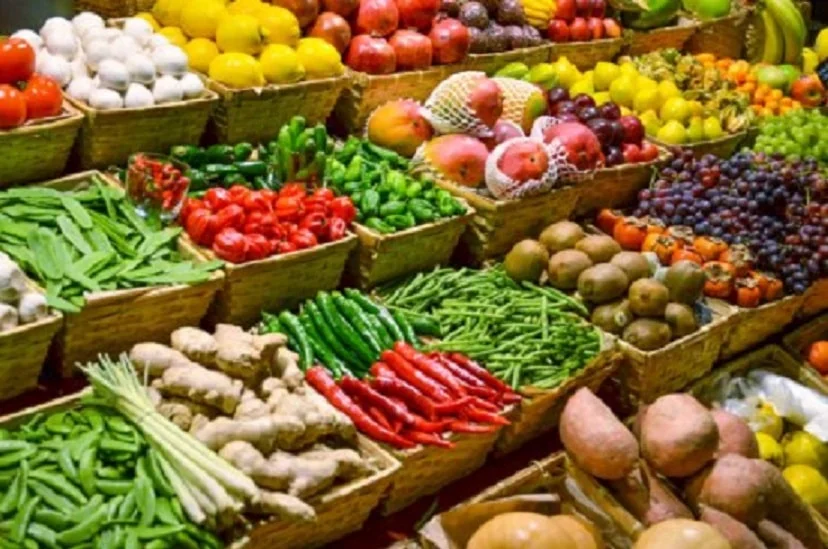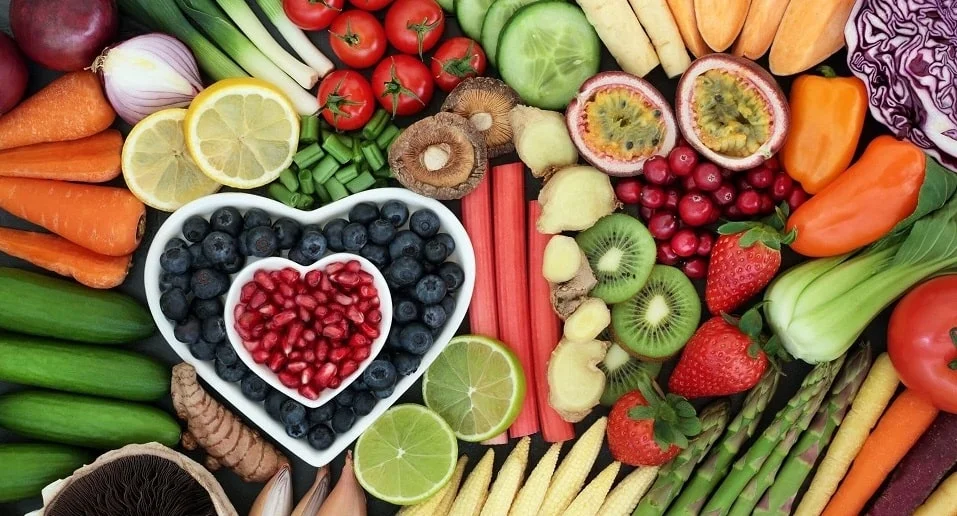The term “plant-based” has been thrown around in the wellness world for some time now, but even so, there’s a lot of confusion around its meaning. It’s no secret that adding more fruits, vegetables, nuts and seeds into your diet can have positive effects on the body, such as a decreased risk of heart disease, reduced blood pressure and improvement of other health conditions. Some think that being plant-based means having a vegan or vegetarian diet, while others say adding plants to a diet with animal-based foods also count as plant-based.
I was a vegetarian for many years, so my diet consisted of fruits, vegetables, beans, dairy-free milks and whole grains. Since then I’ve transitioned some meat back into my diet, but vegetables, fruits and whole grains still make up a large portion of it. Does this mean I’m still technically plant-based?
I decided to clarify this concept with the help of an expert to understand what counts as a plant-based diet, the best way to begin, and what benefits and risks to expect.
If you’re looking to try a plant-based diet, use this as your guide, but always consult with a medical practitioner before making any drastic dietary changes.
What is considered a plant-based diet?
There are various diets that could fall under the plant-based umbrella. According to Trista Best, MPH, RD, LD, “plant-based” is a broad term used to describe eating patterns that are primarily made up of fruit, vegetables, legumes and grains. “These diets are either void of or significantly limited on the amount of animal products consumed,” she says. However, there aren’t strict guidelines attached to this eating lifestyle, and many plant-based diets can fall into this category, including vegan, vegetarian, pescatarian, Mediterranean and a newer one known as flexitarian.
Best says, “A flexitarian diet is one where the individual decides for themselves how much and what type of animal products they consume.” Research has found that a flexitarian diet may be a good way to make gradual behavioral changes around meat consumption, because it’s not strict like other plant-based diets, such as veganism.
So while you may reduce your consumption of meat, seafood, eggs and dairy products, you don’t necessarily need to cut them out. The goal is to make sure the majority of what you’re eating is plant-derived.
It’s also hard to ignore that plant-based lifestyles have increased in popularity given the growing number of plant-based food alternatives, including Beyond Burgers, Impossible Foods, plus a host of plant-based milks and plant-based cheese products. Even fast food restaurants have focused on marketing for new plant-based burgers and other plant-based foods. As someone who’s open to trying out almost any type of food, I can vouch that some of these plant-based variations can easily pass for the real thing and even taste decent. But are these options cheating?
“Meat and animal product alternatives like cashew cheese and Beyond Meat are technically a part of the plant-based umbrella,” explains Best. However, she points out that these foods should be consumed in moderation.
“They are often high in added fats and fillers necessary to give these alternatives their taste and texture,” she adds, explaining that it’s not uncommon for them to be high in sodium as well. Therefore, if you’re primarily focused on your health and want to treat yourself to any of these plant-based alternatives, limit how often you eat them or opt for the real deal instead.

What are the benefits?
Plant-based diets are linked to a decreased risk of heart disease, Type 2 diabetes and reduced blood pressure. They can also be helpful for weight loss — but you will still want to be mindful of macronutrient needs to reach your weight loss goals.
Adding more plant-based foods is a great way to reduce inflammation, which is also shown to be important for overall health. Inflammation is a natural reaction in the body, but when it becomes chronic and widespread, it can cause health problems. While several foods are linked to higher inflammation levels, the biggest offenders are refined and processed foods like white bread, pastries, fried food, processed meat and processed fats like margarine and shortening.
How to go plant-based
If you’re ready to embark on this lifestyle change, here are some tips. Remember that you can be flexible in how you begin a plant-based journey, and you get to decide what works best for your circumstances.
Start with baby steps
If switching to a plant-based diet feels intimidating, there’s nothing wrong with starting small. Best says by gradually introducing plant-based meals on a weekly basis, it helps increase your chances of sticking to it. She suggests starting with one meat-free day and gradually adding another meat-free day each week. “Going vegan shouldn’t be done cold turkey and can make the change less sustainable,” she warns.
Make veggies the focus of your meals
When you’re planning your meals, it’s common for people to think about steak, chicken or fish as the main course. Use this time to try new vegan recipes at home, and try to reframe the way you cook by making the veggies or other plant-based food the main focal point. This way the plants take center stage, and the animal products are more like sides.
As you get comfortable with this process, increase the number of days you go meatless. Best points out that by consistently trying new plant-based recipes, you’ll eventually have a selection of go-to meals to choose from. “Having staples to turn to make it easier to prepare meals and stick to a new diet pattern,” she says.
Eat the rainbow
Try incorporating a wide variety of colors on your plate every day. This way you’re getting a multitude of fruits and veggies, which also means you’re getting more nutrients. Plus, when something is more colorful or attractive, it’s more fun to eat. Don’t be afraid to experiment with new types of fruit or veggies that you’ve never tried before.
Rethink protein
It’s a common misconception that meat is the only source of protein. And while a plant-based diet does allow for some meat, eggs or other animal products, the goal is to reduce the frequency with which you rely on them as a protein source.
It’s still important to make sure you’re getting enough protein, so if you reduce animal products, you need to replace them with other forms of protein like beans, nuts or seeds (and whole-food, unprocessed sources are the best).

How plant-based diets help the environment
Another reason people choose to follow a plant-based diet is because it can be more sustainable. The food system is a huge factor in climate change, and many experts agree that a plant-based lifestyle can help minimize the impact.
According to Best, choosing to eat a plant-forward diet can reduce your carbon footprint. “Eating more plants rather than meat reduces your carbon footprint simply by cutting down on the amount of food that requires significant machinery and land to get to your plate,” she explains. “An entirely vegan diet has the lowest carbon footprint at 1.5 tons CO2e (carbon dioxide equivalent).”
Although plant-forward diets have been shown to reduce greenhouse gas emissions, it’s still unclear if particular plant-based foods, such as meat alternatives, have the same effect. If the environment is one of your main reasons for going plant-based, your best bet is to stick to adding more whole foods to your diet.
Who should avoid a plant-based diet?
Just like any diet, going plant-based should be approached with caution. Since everyone’s health needs vary, it’s best to discuss with your doctor any risk factors. “For example, someone who is anemic should speak to their health care provider before going plant based since nonheme iron found in plants can be more difficult to absorb,” Best says.
Although adding more plant-based components to your diet can have benefits, there are some who may not be the best candidates for this style of eating. Some drawbacks to a diet that is primarily plant-based can include lower amounts of B vitamins, iron and vitamin D3. Similarly, plant-based protein doesn’t compare to animal-based protein, which consists of all the amino acids your body needs.
If you are someone who depends on a high-protein diet, going plant-based would require extra meal planning to make sure you get an adequate amount of protein on a daily basis. Best explains that there are 20 amino acids the body needs, but there are nine classified as essential. She says, “Beans are known for their protein content and eating them paired with rice is the best way to get in all nine essential amino acids, which is vital to plant-based dieters.”
The bottom line
It’s important to understand the pros and cons of plant-based eating. While “plant-based” may have a broad definition, one thing is clear: Adding more fruits, vegetables and whole grains to your diet can have positive benefits, even if you choose to keep meat in your diet.
If you decide to follow a plant-based diet, know that it doesn’t need to be costly or bland. By sticking to the basics, such as legumes, potatoes, fresh or frozen fruits and vegetables, you can build plenty of nutrient-dense meals. If you choose to try some plant-based meat alternatives, keep in mind that they shouldn’t make up the bulk of your plant intake.
If you still have questions about going plant-based or are unsure how to go about it, consult with a doctor, registered dietitian or nutritionist. They can determine if this diet is the right fit for you and guide you in a safe and efficient manner.
The information contained in this article is for educational and informational purposes only and is not intended as health or medical advice. Always consult a physician or other qualified health provider regarding any questions you may have about a medical condition or health objectives.
Mercey Livingston contributed to this story. Source: Cnet



